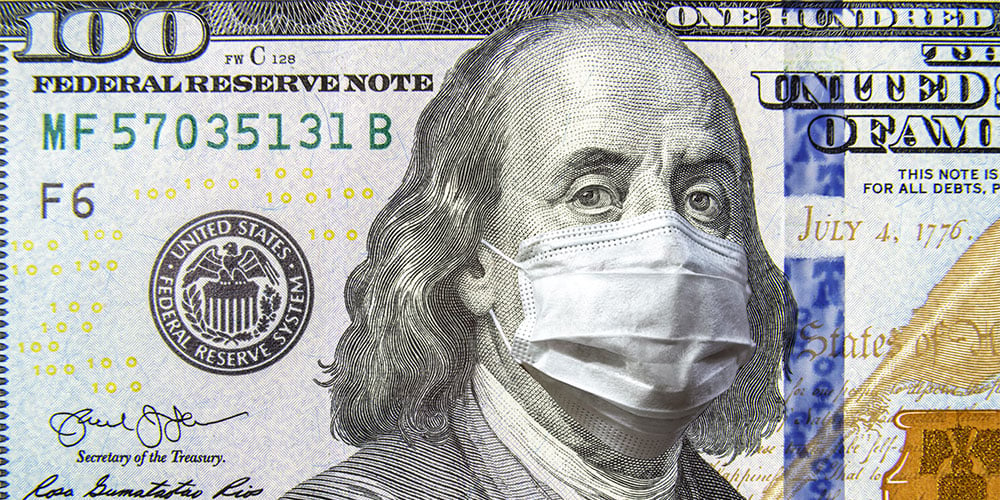By: Patrick Ungashick

To help our clients and other business owners and leaders respond to the unprecedented leadership disruptions caused by the coronavirus (COVID-19) outbreak, the team at NAVIX offers the following crisis management information series.
Responding to Coronavirus: PPP: Loan Forgiveness, Taxation, and Pitfalls
The Payroll Protection Program (PPP) forgivable loan program, after a rocky rollout, has entered a new reality-check phase. Some of the heralded program benefits seem to be fading away, and new risks for borrowers are emerging. Here’s what business owners and leaders need to know.
Loan Forgiveness and PPP Taxation
Last week, the IRS released Notice 2020-032 regarding the deductibility of expenses that are paid with PPP loan proceeds. The bottom line is that normally deductible expenses paid with PPP funds are likely not deductible. The reasoning is that if the loan is forgiven, and the borrowing business gets to deduct the expenses it paid with the PPP funds, that creates a “double benefit” for the borrowing company.
Not everybody agrees with the IRS’s interpretation of this crucial component of the CARES Act. The AICPA is fighting it. Chris Hesse, CPA, chair of the AICPA Tax Executive Committee, said: “In effect, the IRS guidance means that the taxability provision [Section 1106(i)] has no meaning. Why waste the ink to say that for purposes of the Code, the loan forgiveness is not includible in income, if the government will just take away deductions in the same amount?”[1]
So, unless Congress intervenes and overrides the IRS, it seems that the much-proclaimed tax benefits of the PPP program have been largely taken off the table.
Retroactive Guidance – Good Faith Certification of Need
As part of the PPP application, borrowers have been required to certify in good faith that “current economic uncertainty makes this loan request necessary to support the ongoing operations of the Applicant.” Neither the CARES Act nor the Treasury Department and Small Business Administration (SBA) offered any clarifying guidance on this provision. Rather, many congressional and governmental leaders initially urged business owners and executives to rush to apply, given the finite amount of loan proceeds available.
Now, it appears the government has done an about-face. The Treasury Department’s latest guidelines retroactively instruct all PPP borrowers to make sure they can demonstrate a “need” for the funds, and also show that other sources of liquidity were not sufficiently available to that borrower. This standard did not exist when the PPP was first rolled out.
Consequently, borrowers who received PPP loans must decide whether or not to keep the funds. Borrowers have until May 7th to repay the funds back to the SBA under a “Limited Safe Harbor” if they deem they cannot demonstrate that their need exists.
Audit Risk
Finally, US Treasury Secretary Steven Mnuchin announced that any company which received $2 million or more in PPP funds will receive a full audit on the loan and how it was used. The announcement comes on the heels of several higher-profile companies that secured millions, and in some cases, tens of millions, in PPP funds. Secretary Mnuchin also reminded borrowers that they could face criminal liability if the Treasure Department determines that the borrower cannot demonstrate the economic need for the funds at the time of the application.
And More Unanswered Questions
On top of these developments, many borrowers still have unanswered PPP questions such as eligible uses for the funds, how loan forgiveness is calculated, how to rehire furloughed employees, and others. PPP came into being in a cloud of confusion. While some questions have been answered, business owners and leaders now face a new round of uncertainty and frustration.
Conclusion
At this point, PPP borrowers must consult with their lenders and tax and legal advisors to discuss their specific situation and questions—ideally prior to the expiration of the May 7th Limited Safe Harbor if there is any doubt about the wisdom of keeping the PPP funds.
The NAVIX team has helped hundreds of business owners prepare for exit. We have also helped countless owners and leaders deal with recessions, liquidity crises, and economic upheaval. Our experience and perspective enable us to guide our clients through difficult times, such as these.
[1] https://www.journalofaccountancy.com/news/2020/may/expenses-reimbursed-by-ppp-not-tax-deductible-paycheck-protection-program.html








